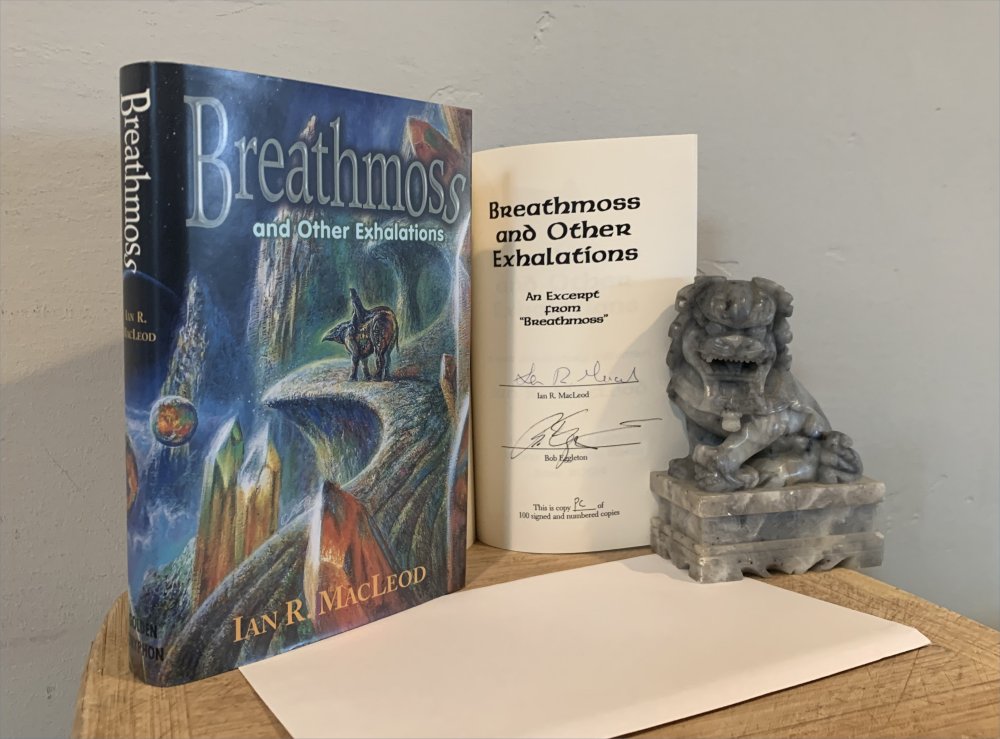This week’s Sunday novella is “New Light on the Drake Equation” by Ian R. MacLeod. It was first published on the (long-gone) website Sci Fiction on May 2, 2001. (The site, edited by Ellen Datlow, won a Hugo Award in 2005 and was disbanded by its owner, the SciFi.com website, a few months later.)
Subsequently the story has been published, aside from in these Dozois anthologies, in Breathmoss and Other Exhalations in 2004, and in a “Best of” ebook-only collection from Open Road in 2013.
The story is as much meditation as a story. It concerns an aging astronomer, Tom Kelly, who has been passionate about SETI, the Search for Extra-Terrestrial Intelligence, his entire life. The story alternates between his present, sometime in the 21st century, as he lives alone on a mountaintop in France, periodically visiting a nearby village to check his mail and drink at a cafe, and his past, when he met a woman at university and spent several years with her until they drifted apart.
The present Tom has seen the promise of SETI fade away into obscurity. He is virtually the only person still monitoring signals from space. Meanwhile new things have come into the world, notable a kind of nanotechnogical(?) learning via “vials” one can take to learn new skills, such as speaking French, or even to modify the body. These have led to the fad of “flyers,” thin people who have grown wings and can literally fly, or at least jump off high places and glide. He has no interest in them.
The past Tom meets a girl named Terr, whose interests come and go, in complete contrast to his. She even goes through a phase of studying science fiction — the story namechecks, Varley, Heinlein, Simak, van Vogt, Wyndham, others — before losing interest and moving on to other things.
And now, after decades, Tom think he sees Terr in the village, and later he sees her walking up the road to his isolated home. They talk of his progress, or lack of. Over time evidence for the various factors of the famous Drake Equation have changed. In particular, the proportion of stars that have planetary systems is discovered to be very low. (In contrast to the discoveries of our own timeline.) But Tom hasn’t given up; he even wrote a paper, “New Light on the Drake Equation,” to give the latest data the best possible spin. Which gets published only in a popular science comic magazine. And yet, he holds out hope, despite no evidence, despite no signals.
\\
This is an introspective story that’s perhaps as much about science fiction as science, and how the dreams we have in our youth can shape our existence, whether or not they those dreams ever come true. Some people (like Terr) move on; others (like Tom) remain devout.
It’s been 21 years since the story was published, and its relevance to science fiction, whether intended or not, is clearer than ever. There’s less and less science fiction being written and published these days, as fantasy has come to dominate the SFF field. Just as people complain about the absence of flying cars, is the promise of science fictional futures in general fading away? Or morphing into the fantasy of impossible Star Wars and Star Trek universes?
There might be a tiny subgenre of SF stories on similar themes — meta-SF about SF. The couple that occur to me are William Gibson’s “The Gernsback Continuum,” with its gleaming futuristic cities dissolving to desert mirages (if I recall the story correctly), and Robert Silverberg’s “Schwartz Between the Galaxies,” with its mundane space trip contrasting with the science fiction dreams of dancing aliens.
For those of us who still read science fiction and try to sort it out from the chaff of fantasy, don’t we all secretly worry that most of our SF dreams will never happen?
***
I ordered the book shown above from the publisher, and it came with a separate, enveloped chapbook called “An Excerpt from ‘Breathmoss'”. It’s 10 pages of the story, followed by a signature plate with both MacLeod’s and cover artist Bob Eggleton’s signature, as seen in the photo. Perhaps a promotional item (the following page says the book itself is “forthcoming” in June 2004) or perhaps a supplemental item designed to gather those two signatures in a more practical fashion than shipping entire books back and forth between MacLeod and Eggleton?






